Welcome to the exhilarating world of BMX biking, where riders defy gravity and showcase awe-inspiring stunts. Among these thrilling maneuvers, one stands out as the epitome of skill and excitement: the legendary wheelie! Imagine effortlessly balancing on your rear wheel as you ride down the street or tear through a dirt track. It’s a sight that never fails to capture attention and spark envy among fellow riders.
But here’s the catch – becoming skilled at performing a wheelie on a BMX bike is more challenging than it appears. It takes practice, accuracy, and a lot of perseverance. Whether you’re new to this skill and eager to learn or an experienced rider looking for fresh obstacles, this detailed guide will provide you with all the necessary information to execute impressive wheelies like a professional.
Whether you’re a beginner or an experienced rider, our comprehensive guide has everything you need to know about mastering wheelies on BMX bikes. From understanding different techniques for different bike sizes and styles to ensuring your safety with proper helmet and shoelace adjustments, we’ve got you covered from start to finish. So let’s get started and explore the ultimate guide on how to perform impressive wheelies on a BMX bike in 2023!
What is a Wheelie?
When executing a wheelie, you essentially elevate the front wheel of your bicycle, relying solely on the rear wheel for balance. The key elements of this maneuver are maintaining control, balance, and finesse. By adjusting your body weight and applying precise pedal pressure, you can find that ideal position where the front tire suspends in mid-air while still moving forward smoothly.
Riders can master various types of wheelies. The most common one is called a manual or “manualing,” where you lift the front wheel using only your body movements, without any pedaling. Another popular variant is the power wheelie, which involves aggressively pedaling to generate upward force and pop up the front tire.
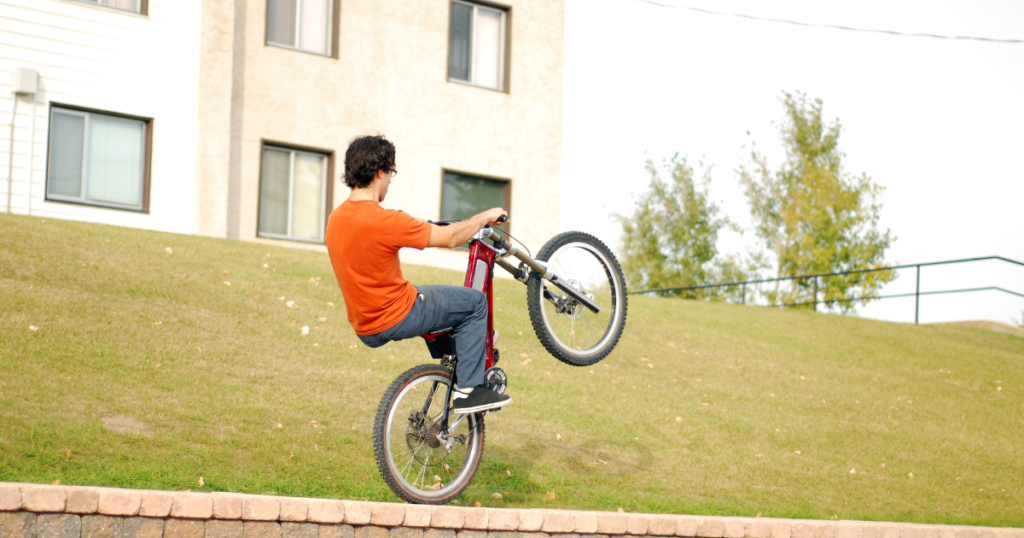
To perform a successful wheelie on a BMX bike, it’s important to start by finding a spacious area where you have plenty of room to practice. Begin riding at a moderate speed while maintaining proper posture – keeping your back straight, arms slightly bent, and eyes focused ahead. As you become more confident, shift your weight towards the back of the bike and apply steady pressure on your pedals to lift the front wheel off the ground.
Keep practicing and trying out different techniques to discover what works best for you. With dedication and time, you’ll be able to confidently ride down any street or track on just one thrilling, albeit slightly unsteady, wheel!
The Different Types of Wheelies
If you want to master the art of doing wheelies on a BMX bike, there are actually multiple types that you can experiment with. Each type demands slightly different techniques and skills, but they all center around the fundamental concept of lifting the front wheel off the ground while keeping your balance intact.
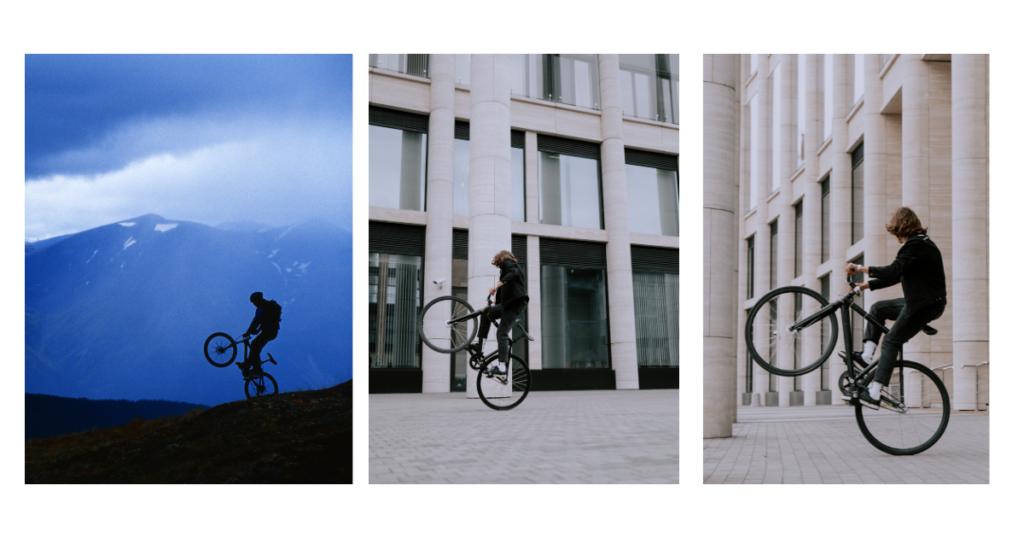
A popular type of trick called a wheelie is the manual. To perform this, you rely on your body weight and balance to lift the front wheel off the ground while riding only on your back wheel. This maneuver demands a mix of skill, strength, and focus in order to maintain control.
There is another type of wheelie called the pedal kick-up. As the name implies, this maneuver involves using your feet to kick up on the pedals and lift the front wheel off the ground. It requires quick reflexes and precise timing to execute this more dynamic move.
Another popular variation is the coaster-wheelie. This type of wheelie involves utilizing momentum from riding at a fast speed or going downhill to lift both wheels off the ground simultaneously. The key is finding that perfect balance point where you can stay upright without tipping over.
Another trick to consider is the endo or nose manual. It involves lifting just one side of your front tire while keeping the back tire in contact with or slightly off the ground. Perfecting this maneuver requires precise control and finesse.
Now that you’re familiar with the various types of wheelies, it’s time to begin practicing! Prioritize your safety by wearing protective gear and finding a secluded area free from traffic or obstacles. This will allow you to practice without any distractions. With dedication and consistent effort, you’ll soon be executing impressive wheelies effortlessly!
How Do You Wheelie A Small BMX Bike?
If you want to perform tricks on a small BMX bike, there are a couple of important techniques to remember. The first is finding the right balance point on your bike, which is usually in the middle. This allows you to easily shift your weight and maintain control while performing tricks.
To perform a wheelie, begin by pedaling at a moderate speed while maintaining a slightly forward body position. As you gather momentum, gradually lean back and exert force on the handlebars to pull up. This action will elevate the front wheel off the ground.
After lifting the front wheel, make subtle adjustments to your body position and pedal strokes to stay in control. Keep your arms relaxed but firm on the handlebars for stability.
When it comes to learning how to do a wheelie on a small BMX bike, practice is essential. Begin by attempting short bursts where you lift the front wheel off the ground. As you start feeling more at ease, gradually increase both the distance and duration of your wheelies.

It’s important to keep in mind that mastering this skill requires time and patience. Don’t be discouraged if you don’t see immediate results. Remember, persistence is key!
It is crucial to prioritize safety whenever attempting stunts or tricks on a small BMX bike. Always remember to wear necessary protective gear, including helmets, knee pads, and elbow pads.
Feel free to give it a try! With practice and determination, you’ll soon be confidently cruising down the street on one wheel like an expert rider!
How Do You Wheelie On A Mountain Bike?
Learning how to do a wheelie on a mountain bike is slightly different from doing one on a BMX bike. Here are some helpful tips to help you become a master at wheelies on your mountain bike.

1. Find the right gear:
Start by shifting into a gear that provides enough resistance but still allows you to pedal smoothly.
2. Position yourself correctly:
Shift your body weight slightly towards the back and maintain your pedals level. Place one foot at the top position while keeping the other foot at the bottom.
3. Begin pedaling forcefully:
Apply pressure on the pedals while simultaneously pulling up on the handlebars. This will lift your front wheel off the ground.
4. Maintain balance:
To maintain balance and control when your front wheel is off the ground, make subtle adjustments in your body positioning and pedal pressure.
5. Practice, practice, practice:
Mastering the art of doing wheelies takes time and practice. Begin by trying short wheelies and gradually increase both the distance and duration as you gain more confidence.
It’s important to prioritize safety when trying out new tricks or maneuvers on your mountain bike. Make sure to wear protective gear such as helmets, knee pads, elbow pads, and gloves to ensure added protection.
Tips for Doing a Wheelie on a BMX Bike
1. Find the right balance:
To perform a successful wheelie, finding the right balance point is crucial. Begin by standing up on your pedals and leaning back slightly, while keeping your arms relaxed. Slowly shift your weight backward until you notice the front wheel lifting off the ground.
2. Keep practicing:
Mastering the art of wheelies requires practice and patience. Begin by attempting short bursts of balance and gradually increase the duration of your wheelie. Don’t get discouraged if it takes time to find your groove – just keep practicing!
3. Use pedal technique:
A common mistake that beginners often make is relying solely on their arms to lift the front wheel. However, it’s important to focus on using proper pedal technique instead. As you lean back, apply pressure to your rear foot while simultaneously pulling up with your front foot.
4. Maintain control:
When attempting to do a wheelie, maintaining control throughout the entire process is crucial. Keep your eyes focused ahead and make small adjustments in body position and pedal pressure to ensure balance.
5. Avoid overcompensating:
When learning how to do a wheelie, it’s common for riders to overcompensate by jerking their handlebars or pedaling too aggressively. But remember, smooth movements are crucial. Try to avoid sudden or exaggerated motions that can disrupt your balance.
6. Stay safe:
While you may feel tempted to showcase your newly acquired wheelie skills in crowded places or busy streets, it is crucial to always prioritize safety when attempting such maneuvers on a BMX bike. Instead, seek out an open space like an empty parking lot, where there is ample room for any errors that may occur during practice. This way, you can hone your skills without endangering yourself or others.
7 .Have fun:
Most importantly, always keep in mind that riding a BMX bike should be a source of enjoyment! Embrace the thrill of mastering a wheelie and have a blast as you progress. Don’t hesitate to try out different techniques and discover your own distinctive style.
The basics of wheelies on BMX bike
If you’re looking to amaze your friends and have a blast on your BMX bike, mastering the art of wheelies is crucial. A wheelie involves lifting the front wheel off the ground and maintaining balance on just the back wheel while riding. While it might appear intimidating initially, with some practice and determination, anyone can learn how to do a perfect wheelie.
To begin, choose a spacious area with no obstacles where you have enough room to move around. Start pedaling at a moderate speed, keeping your body weight balanced over the bike. As you build momentum, gently lift the handlebars while shifting your weight backward towards the rear tire.
As you lift the front wheel off the ground, make small adjustments in your body position and pedal strokes to keep your balance. Look forward and stay relaxed as you ride through the wheelie. It’s important not to just rely on pulling up with your arms; instead, engage your core muscles for stability.
To improve your overall control during a wheelie and strengthen the necessary muscles, it’s beneficial to practice basic balance exercises like manualing, which involves riding with only your back tire.
Always prioritize safety when attempting a wheelie. Make sure to wear protective gear such as a helmet, knee pads, and elbow pads. Begin by practicing in an open area away from traffic or any potential hazards until you feel confident enough to try more challenging terrain or tricks.
Keep in mind that mastering the skill of doing a proper wheelie requires both time and patience. It’s normal if you don’t get it right away, so don’t be discouraged. Continue practicing regularly, gradually increasing the distance covered and duration of each practice session. With dedication and perseverance, you’ll soon be able to impressively perform BMX bike maneuvers!
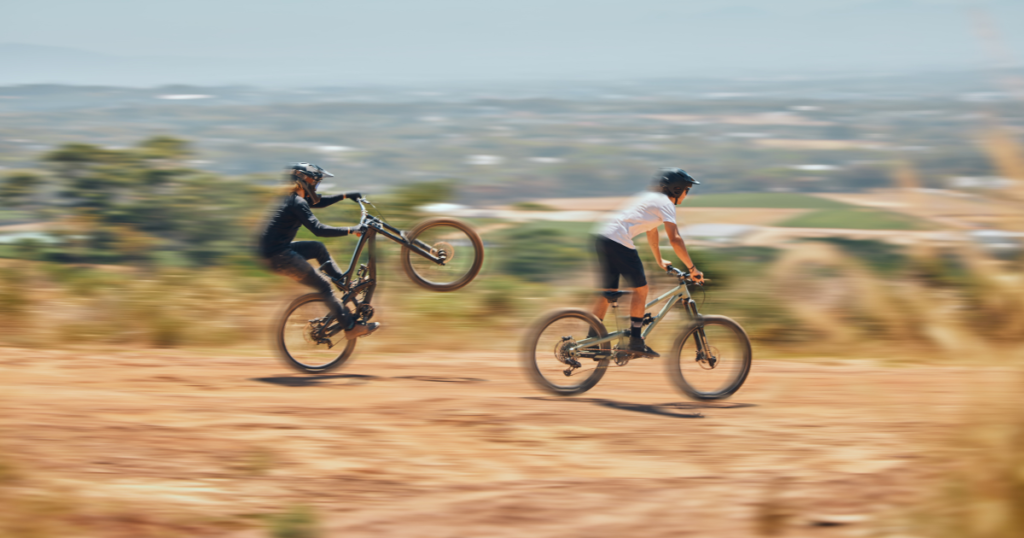
The benefits of wheeling on a BMX bike
Wheeling on a BMX bike offers more than just an exciting adrenaline rush. It also provides significant benefits for improving your bike handling skills. Mastering the art of the wheelie requires precise control over body movements and weight distribution, leading to enhanced overall control in different biking scenarios.
In addition, wheelies can be beneficial for building core strength and improving balance. The act of lifting the front wheel off the ground requires the engagement of abdominal muscles to maintain stability. This repeated action over time can lead to increased core strength and enhanced stability not only while riding a bike but also in everyday activities.
In addition, performing wheelies on a BMX bike offers a platform to display your personal style and unleash your creativity. It becomes an opportunity for self-expression as you explore various variations and tricks while riding. This artistic element of wheeling brings an extra level of enjoyment to an already thrilling activity.
We shouldn’t overlook the mental advantages that come with mastering a new skill like performing a wheelie. The feeling of achievement when successfully executing a seamless wheelie is unparalleled. It enhances self-confidence, fosters determination, and ignites the drive to keep pushing limits both on and off the bicycle.
The dangers of wheeling on a BMX bike
The feeling of excitement that comes from successfully performing a wheelie on a BMX bike is undeniable. However, it’s crucial to recognize and be aware of the potential risks associated with this daring stunt.
The key to successfully executing a wheelie is maintaining proper balance. Without good balance, there’s a risk of losing control of your bike and potentially falling off, which can lead to scrapes, bruises, or even more serious injuries.
Another potential risk to consider is the impact on your bike itself. Performing wheelies continuously can put significant strain on the rear wheel, potentially causing damage or mechanical failures in its components.
Furthermore, performing wheelies in hazardous locations like busy streets or crowded areas presents substantial risks not only to yourself but also to pedestrians and fellow cyclists. It is crucial to select a suitable setting that provides adequate space and minimizes potential dangers.
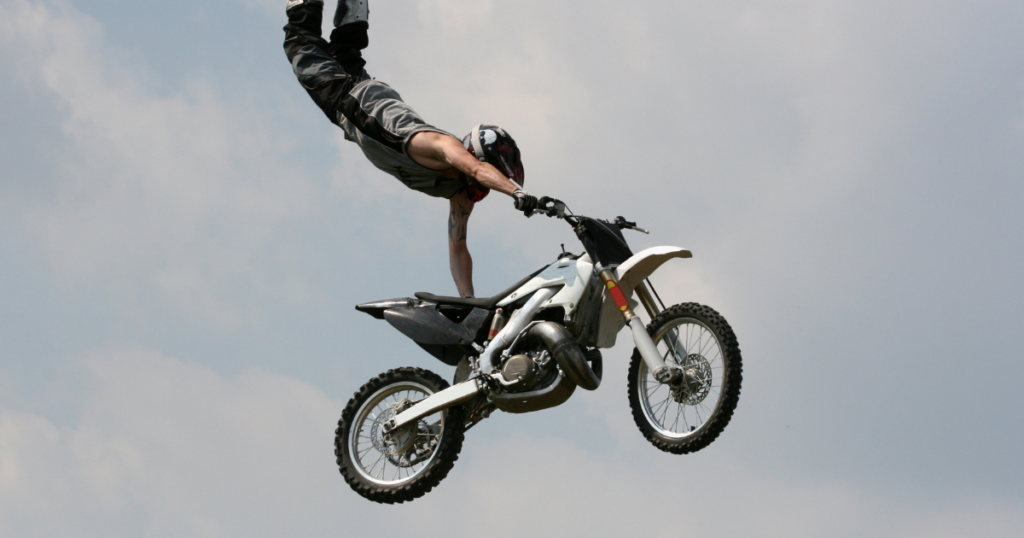
It’s important to avoid pushing yourself beyond your skill level too quickly, as this can increase the risk of accidents. Achieving balance and control requires practice and patience. Rushing into advanced maneuvers without first establishing a strong foundation significantly raises the likelihood of accidents occurring.
Always prioritize safety over flashy tricks when participating in biking stunts. Ensure your protection by wearing helmets and knee pads, practice in controlled settings under supervision if possible, and advance at a pace that is comfortable for you.
What Type Of BMX Bikes Are Easiest To Wheelie?
If you’re looking to do wheelies on a BMX bike, your choice of bike can greatly impact how challenging or effortless it is to pull off this trick. While any BMX bike can be used for wheelies, certain types are known for being more manageable and balanced, making the task easier.
For beginners, a popular choice of BMX bike is the street or freestyle BMX. These bikes are designed with shorter frames and smaller wheels, making them easier to maneuver and control while performing wheelies. They also feature durable construction and strong components that can withstand the impact of landing after executing tricks.
The dirt jump or park BMX is another popular type of bike for performing wheelies. These bikes are specifically designed for jumping and executing aerial tricks, which is why they have a slightly longer frame and larger wheels than street BMX bikes. The added size and stability of these bikes can make it easier to maintain your balance while attempting a wheelie.
Choosing the perfect BMX bike for performing wheelies is ultimately a matter of personal preference and riding style. It’s crucial to try out various bikes to find one that feels comfortable and matches your skill level.
Remember, no matter what type of bike you decide on, it’s important to focus on practicing proper technique and gradually building up your skills when attempting to do wheelies on a BMX bike. So go out there, find the perfect ride for you, and start refining those wheelie abilities!
What size BMX Bike is suitable for wheelie?
If you want to master the art of doing wheelies on a BMX bike, it’s important to consider the size of the bike. Finding the perfect size that suits both your height and personal preference can greatly impact your success in performing wheelies.
If you’re shorter or just starting out and want to learn how to do wheelies, it’s often suggested that you go for a smaller BMX bike. Riders of all skill levels commonly use a 20-inch wheel diameter because it offers great maneuverability and control. This size allows riders to easily lift the front end of the bike without feeling weighed down or off-balance.
However, riders with more experience might gravitate towards bikes that have larger-sized wheels, measuring 22 inches or even 24 inches. These bikes provide added stability and offer a smoother riding experience, which makes them ideal for executing longer and more controlled wheelies.
Choosing the perfect size BMX bike for doing wheelies ultimately comes down to personal preference and trying out different sizes to see what feels most comfortable and manageable for you as a rider. Experimentation is key in finding your ideal fit.
Don’t forget, mastering impressive wheelie skills requires not only having the right size bike but also practicing proper technique.
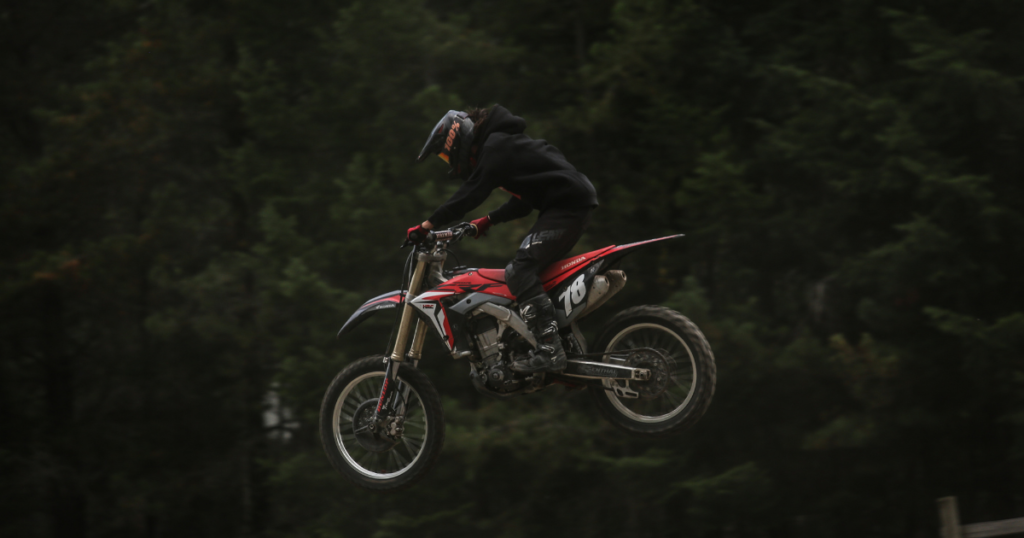
How to progress in wheeling on a BMX bike
To improve your BMX biking skills, practice is essential. Begin by mastering the fundamental techniques of balancing and controlling your bike. Look for a spacious and obstacle-free area where you can safely devote time to practice without any distractions.
To start, find a comfortable position and practice lifting your front wheel off the ground. Pedal at a moderate speed, shift your weight slightly back, and pull up on the handlebars. Find that balance point where you can stay upright without tipping too far back.
As you gain confidence with lifting the front wheel, gradually extend the length and height of your wheelie. Take the time to try out different pedal strokes and body positions to discover the techniques that work most effectively for you.
As you get better at doing wheelies, you can start adding some extra flair to your tricks. For example, try turning or hopping over small obstacles. These little variations will make your wheelies more exciting and also help improve your bike handling skills overall.
It’s important to prioritize safety and wear protective gear when trying new maneuvers. Never push yourself beyond your limits, as progress in wheeling takes time and patience. Don’t be discouraged if you don’t see immediate results; it’s a process that requires persistence.
Make sure to practice regularly and set new goals for yourself. Most importantly, enjoy the process! With dedication and perseverance, you’ll see improvement in your skills in no time.
Are BMX Bikes Good For Wheelies?
Can you perform wheelies on BMX bikes? Absolutely! In fact, BMX bikes are the preferred choice for mastering this impressive trick. Thanks to their lightweight frames and compact design, these bikes offer high maneuverability, allowing riders to effortlessly lift the front wheel off the ground while maintaining balance.
BMX bikes are particularly adept at performing wheelies due to their low gear ratio. This feature allows riders to pedal with less effort, enabling them to generate the necessary power to lift the front wheel. Moreover, BMX bikes typically have shorter chainstays, which further enhances their capability to execute a wheelie.
Another benefit of choosing a BMX bike for performing wheelies is its exceptional durability. These bikes are specifically designed to endure the rigors of jumps and tricks, making them capable of withstanding the stress endured during extended periods of riding on just one wheel.
In addition, BMX bikes are known for their smaller wheels in comparison to other bicycles. This design feature provides riders with enhanced control and maneuverability while executing tricks like wheelies. The reduced weight distributed across a smaller contact patch with the ground allows for more precise movements.
If you’re interested in honing your skills for executing a long and smooth wheelie, investing in a dependable BMX bike is unquestionably advantageous over other bicycle varieties. Regardless of whether you’re a novice or an experienced rider, these adaptable machines are guaranteed to enhance your wheelie prowess significantly!
Conclusion
To conclude, mastering the art of doing a wheelie on a BMX bike can be an incredibly thrilling and exhilarating skill to acquire. Regardless of whether you are a novice or have some prior experience with wheelies, there is always space for growth and progress.
In this article, we’ve discussed the concept of a wheelie and explored various types of wheelies that can be done on a BMX bike. We’ve also provided tips and techniques for successfully performing a wheelie on both small BMX bikes and mountain bikes.
While performing a wheelie may seem exciting, it is important to understand the risks involved. It is crucial to practice this maneuver in safe environments and always prioritize your personal safety by wearing appropriate gear.
Selecting the perfect BMX bike for executing wheelies often favors smaller bikes because they are lighter and more maneuverable. However, riders of any size can still achieve impressive results with proper technique and dedicated practice.
If you want to improve your skills on a BMX bike, the key is consistency. Make sure to set aside regular practice sessions solely focused on enhancing your balance point control and pedal technique. As you gain confidence, gradually increase your speed, but always make sure to stay within your comfort zone.
BMX bikes are great for mastering wheelie skills because of their compact size, strong build, and agile handling. They offer riders of all ages the chance to improve balance while enjoying themselves.
FAQs
1. Can anyone learn how to do a wheelie on a BMX bike?
Definitely! With practice, patience, and the proper techniques, anyone can master the art of doing a wheelie on a BMX bike. It might require some time to find your equilibrium and develop the essential skills, but with perseverance, you’ll be performing impressive wheelies before you know it.
2. How long does it take to master the art of wheelies?
The time it takes for individuals to master the art of wheelies can vary. While some riders may grasp the technique relatively quickly, within a few weeks or even days, others may require more dedicated practice over several months before they feel confident and comfortable executing consistent and controlled wheelies.
3. Are there any safety precautions I should take when attempting a BMX bike wheelie?
Absolutely! When trying out any new trick or stunt on your BMX bike, it’s crucial to prioritize safety above all else. To ensure your well-being, make sure to wear proper protective gear like helmets, knee pads, elbow pads, and gloves. Moreover, select a spacious and open area away from traffic or any obstacles where you can practice without risking harm to yourself or others.
4. What are common mistakes beginners make when learning how to do a BMX bike wheelie?
Beginner cyclists often make some common mistakes when learning the sport. These errors include relying too heavily on pulling the handlebars instead of using their body weight for balance, failing to keep their pedals level, leaning too far back, and not starting with enough speed or momentum. It’s important to remember that mastering these techniques requires finding the right balance between shifting your weight and controlling your pedals.
5. Can I perform tricks while doing a wheelie on my BMX bike?
Once you have gotten the hang of doing basic wheelies on your BMX bike, you can begin to explore and try out different tricks. This could include variations of manuals, such as nose manuals, or incorporating other freestyle moves like barspins or bunny hops into your repertoire of wheelie tricks.

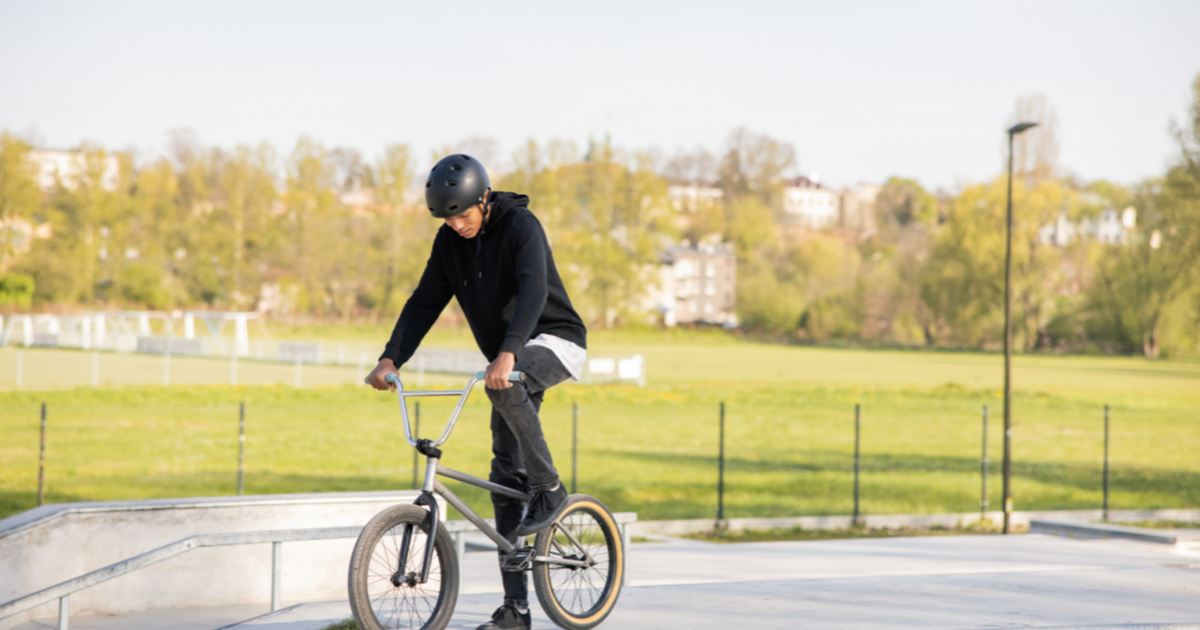


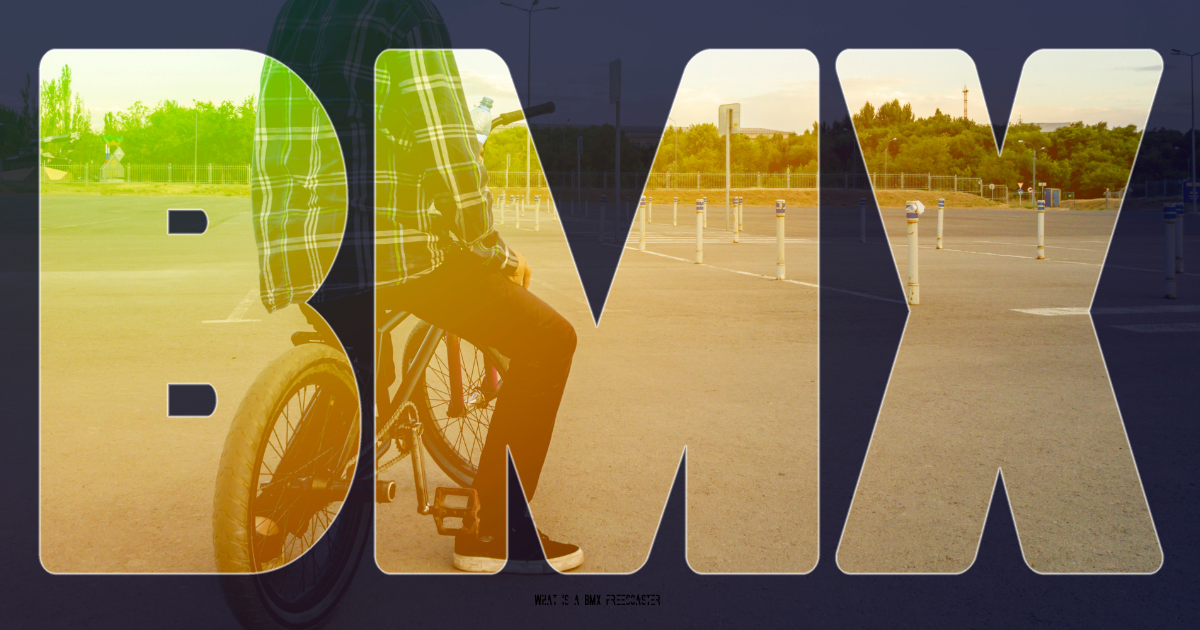

2 thoughts on “How to Do a Wheelie on a BMX Bike in 2023?”